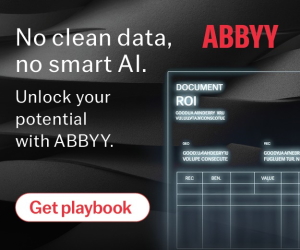
By Christopher Vitek, RPA Industry Veteran and Contact Center Specialist.
IBM debuted its first commercially available computer, the Model 701, on April 7, 1953. Shortly after that the first Information Technology department was formed. For the last 66 years IT departments have been the only organizations responsible for managing Information Systems. In the last four years, however, the RPA industry has been leading a Citizen Developer charge with low/no-code development interfaces.
This is at great odds with the software governance concepts and structures that have been used since the introduction of the Model 701. IT departments intentionally create friction to stymie innovation that is unstable, unsecure, unmanageable, unmaintainable or any other “un” that they can leverage to prevent the use of any technology that does not conform to their “governance” framework. Low/no-code development interfaces, especially those in the RPA business are changing this—one IT department at a time.
‘Moment of Inflection’
Earlier this year I witnessed a moment of inflection at a Fortune 250 company. The EVP of customer service stopped a meeting, looked straight into the eyes of the CIO and said, “we are not following your existing management and deployment practices for RPA, correct?” Without hesitation, he agreed. Knowing both individuals, I am certain that this decision was made after extended private conversations. The key takeaway for the 30+ people in the room is that the rules have changed.
Imagine how hard it is for a CIO, who has spent their entire career living by a set of rules of their own making. Fending off all other opinions with the word “un.” They have been successful with this technique forever. If not for the rapid return-on-investment that RPA offers, they might have succeeded here as well.
CIOs are still part of the game. Their approach to governance, however, is being challenged with automation tools that are built in hours or days and fielded into production in days or weeks. The CIOs’ reality is that they can still manage the creation of solutions in this new world, but they have to be faster. They will also have to deal with quality and quantity in remarkably different ways. Further, there will be large groups of citizen developers that have to be trained and managed in very different ways.
Imagine the EVP of sales who creates a prospecting tool for a staff of 3,000 salespeople. The solution saves 150 FTE and increases customer touches. He sends it out to all of his salespeople and the network requirements crash the global VPN. How does the CIO know what the root cause is (nothing unusual except that there is more of it)? Once the root cause is identified, then does the CIO immediately disable the solution? How does the CIO begin the conversation with the EVP of sales?
IT and Centers of Excellence
Every enterprise will struggle with the use of low/no-code development tools. The RPA industry is leading this charge. Governance is essential to the success of an automation tools. Modifying existing management and governance structures and tools to meet these new demands is the key challenge. Especially, if you seek scale in your deployment.
With its rapid embrace of low/no-code tools in the RPA industry, many large enterprises have created Automation Centers of Excellence. These organizations fill the gaps that traditional IT departments cannot easily integrate into their existing governance models. A word of caution here: If you build the CoE to mimic existing IT practice, it will fail at scale. The CoE must develop its own governance practices that are tolerant of the speed and diversity of the automation tools that are created. This is unique to every enterprise and every industry.
At a high level, the best CoEs are matrixed to each line of business. This is important because tools developed in one department can often be used in other departments. Complex navigational sequences can often be valuable in customer service, accounting and logistics operations. Copy/Paste functions can often be ubiquitously adopted across all operational roles. “Matrixing” the CoE enables the communications needed to identify and deploy the same tool in multiple departments.
While citizen developers can exist in just about any role, they tend to be concentrated in the middle-management and the training departments of large enterprises. These are the people that live with business processes minute-to-minute every day and this makes them the experts. Further, they know how processes are supposed to work and have demonstrated the ability to teach others. In reality, as citizen developers, they will be training bots instead of humans. It is important for the CoE to recognize and mange these groups for positive results.
Managing Solutions Moving Forward
The key to success with RPA is to abandon the idea that only “code” developers can deliver useful process automation tools. At the same time, IT needs to manage the Citizen Developers and the solutions that they create. This will require new approaches to managing the life-cycle of software and solutions. Every enterprise is different. Even competitors in commodity businesses use different systems and processes. In this new world, the successful delivery of automation tools will require creativity and collaboration between management and IT that never existed before. Planning around these issues cannot start too early.
There is going to be a lot of give-and-take between IT and Management in order to create a governance model that works for your organization. Start those conversations as soon as possible or risk having to engage the governance discussion during a crisis.
If you liked this article, please sign up to RPA Today! Registrants will receive our free weekly RPA newsletter updating you on the most recent developments in the Robotic Process Automation, Intelligent Automation and AI space. In addition to news updates, we will also provide feature articles (like this one) with a more in-depth examination of RPA issues for end users and their enterprises.


